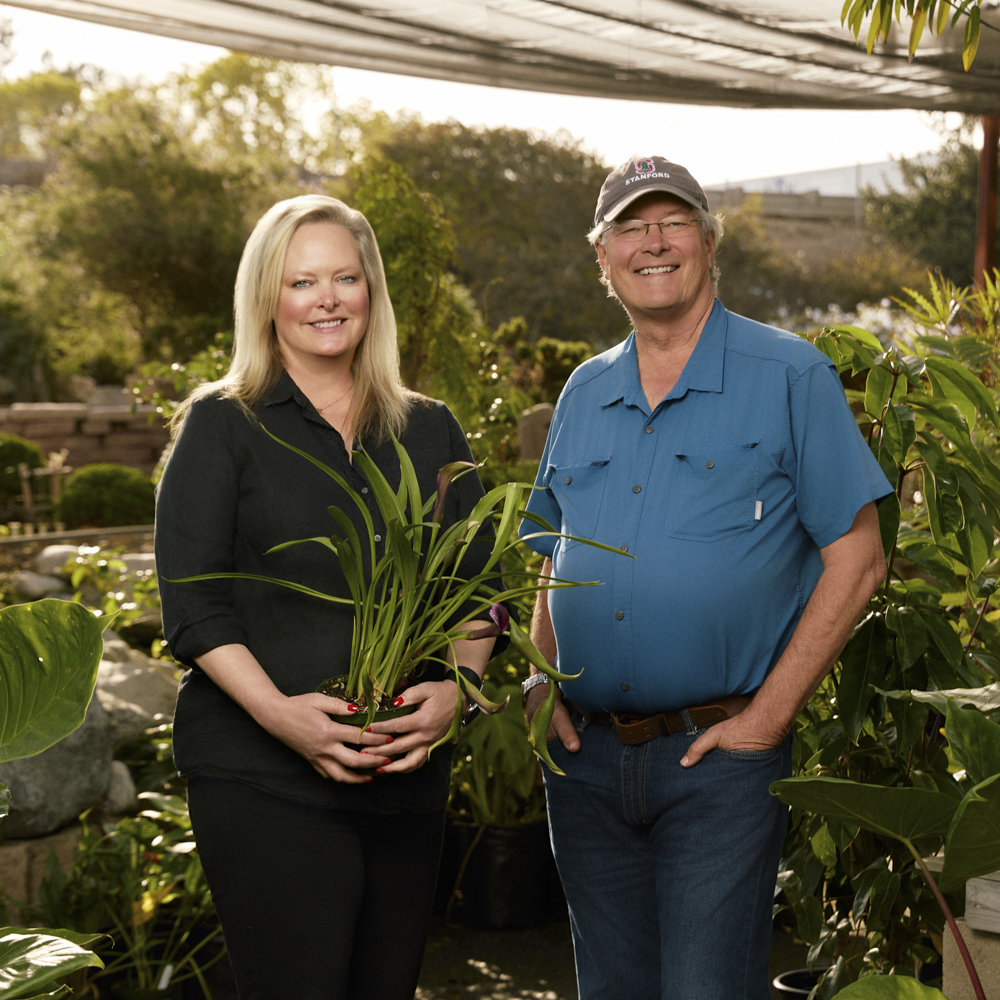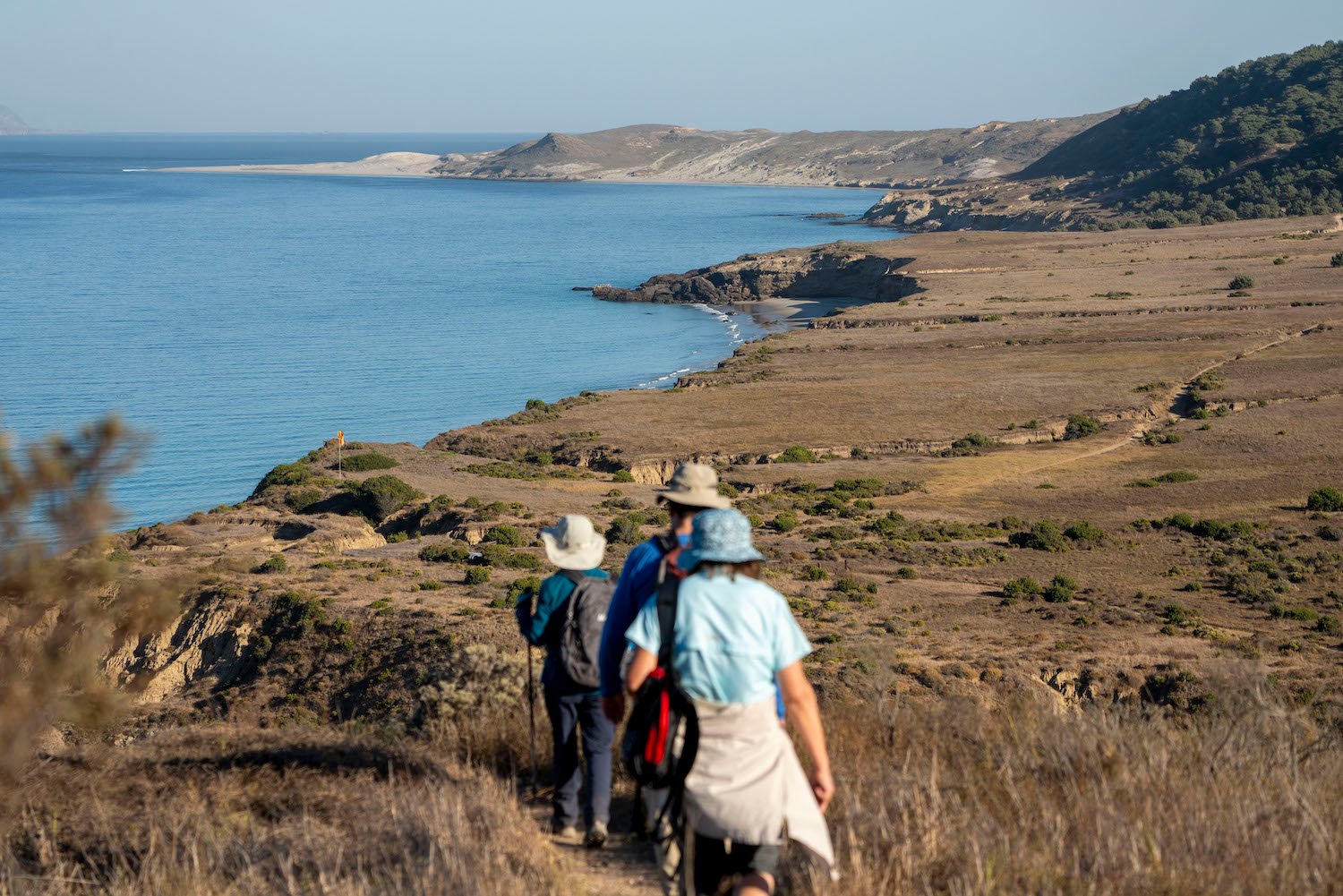Santa Catalina is the island version of a mullet haircut: On the northwest side, I padded down the gentle trails of Little Harbor, ogling buffaloes, sea birds, and waves crashing along the rocks. Then I hit the party side. On a Sunday afternoon in Avalon, the only real town on any of California’s Channel Islands, sunburnt daytrippers lounged along the beach, lines stretched out the door of ice cream shops, and bedraggled backpackers rested on sidewalks.
A 90-minute ferry from Dana Point, Avalon is a common destination for group trips and family vacations. Viral videos tout how the hotels and mansions built into the hills overlooking a turquoise bay resemble beloved Italian vacation destinations. But its golf cart–filled streets, souvenir shops, and beachfront bars belie the rugged, remote wildness of the rest of Catalina and the other seven Channel Islands.
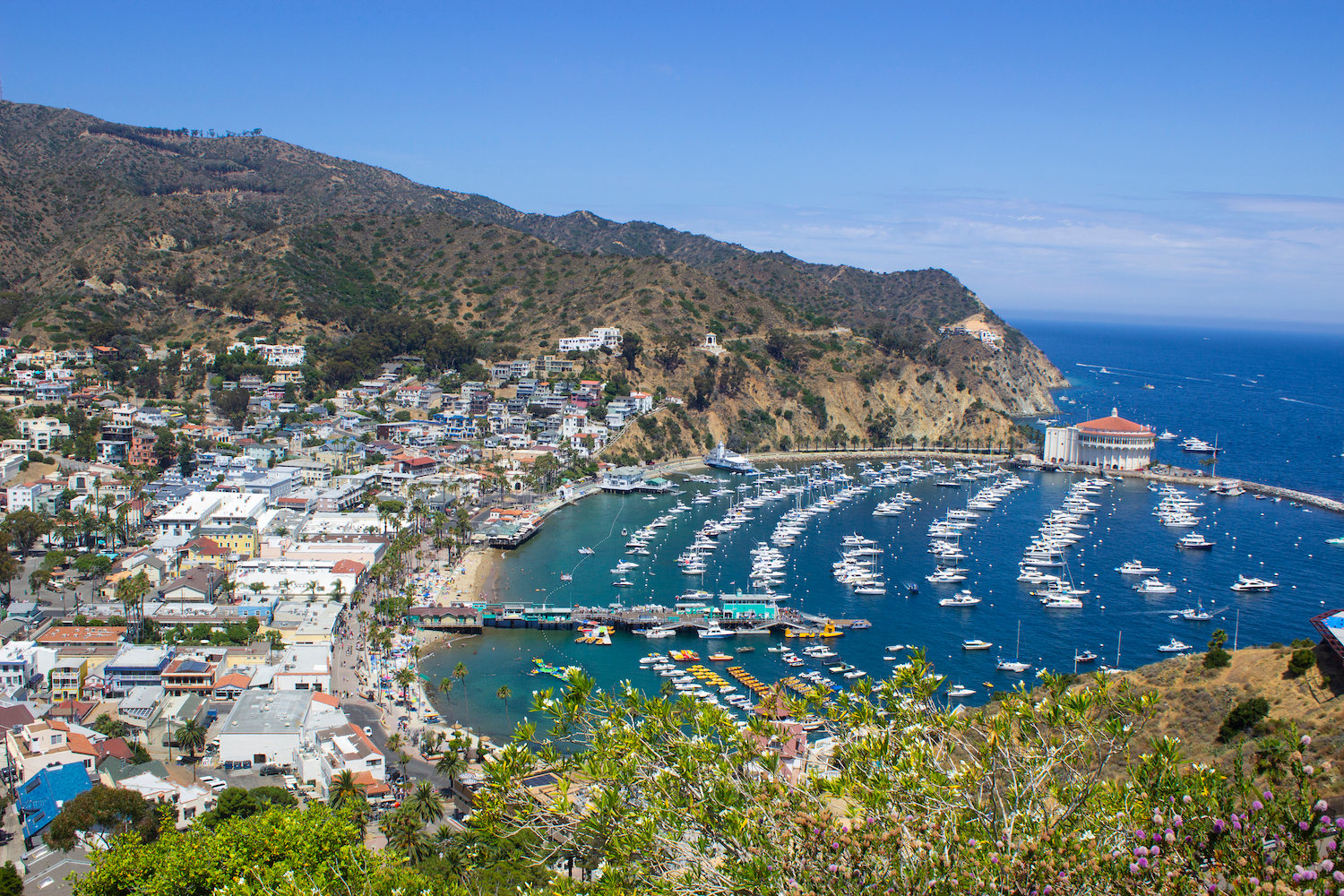
Avalon Harbor at Catalina Island welcomes visitors to the only real town on any of the eight Channel Islands.
While Catalina is the best-known, it was just the first stop of my five-day trip through the archipelago on a cruise with Lindblad Expeditions. Five of the eight Channel Islands form the Channel Islands National Park, California’s least-visited national park. It sees about 330,000 people a year, less than a tenth of the number who enter Yosemite in the same time frame. There’s good reason for that: The distance from the mainland—20 miles from Santa Barbara—is misleading.
To get to any of the individual islands within the park, you have to take a ferry from Ventura or Oxnard, which runs to some isles as often as daily during high season, but others as infrequently as four times a month. Not all have a fresh water source, and the limited campground spaces require significant planning to snag a reservation, get the right boat on the right days, and lug in all your own supplies. “Be prepared with waterproof gear and possibly to get wet. Strong winds and rough seas are possible,” the park’s website warns.
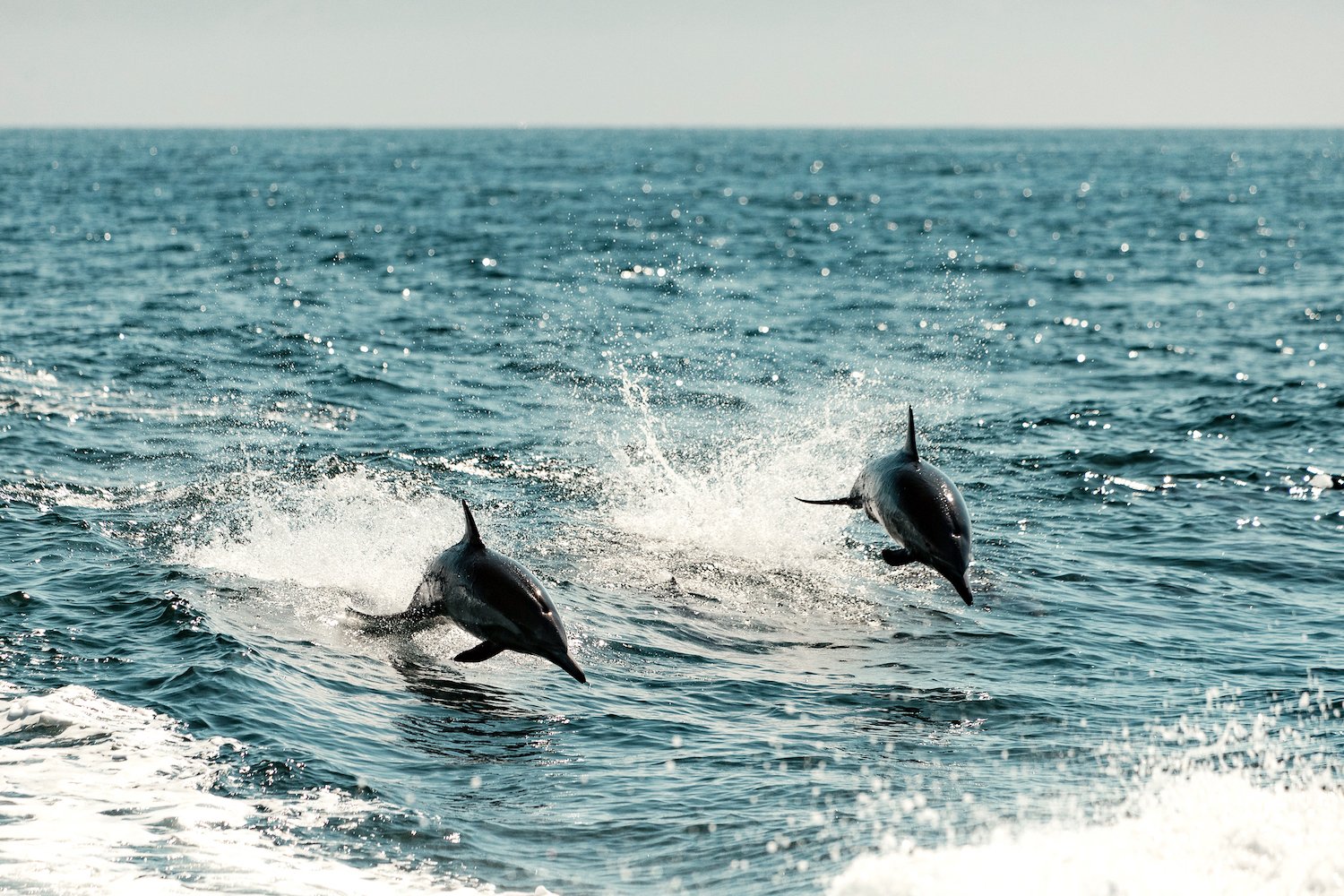
The emptiness and remoteness of these destinations just make the windswept hills more impressive, more worth the extra effort, leaving visitors alone with the dancing sea lions, unafraid foxes, and seemingly infinite horizons. It is hard to get to the islands, but the reward comes in the form of a postcard from the past, a view of a California untrod and undeveloped.

Going to the islands by cruise vanquishes the logistics challenge: I boarded the National Geographic Quest on a sunny morning in Los Angeles Harbor, and each day I awoke at a new island, then transferred to another while enjoying a leisurely lunch. The food represented the region around us: wild Pacific salmon chowder, local organic greens, seared ling cod, California Anjou pear bread pudding.
Naturalists led hikes to Torrey pine forests and pointed out the juvenile pelicans playing on grassy hills. Upon our return to the ship, staff greeted us with mugs of hot chocolate and, if desired, splashes of Baileys or Kahlua.
But no level of luxury could keep the rough seas from rocking our boat. As I entered the dining room for lunch the first day, table settings slid back and forth. A server carrying a tray with 20-some glasses of lemonade lithely jogged a few steps in each direction against the sway to keep the drinks steady.
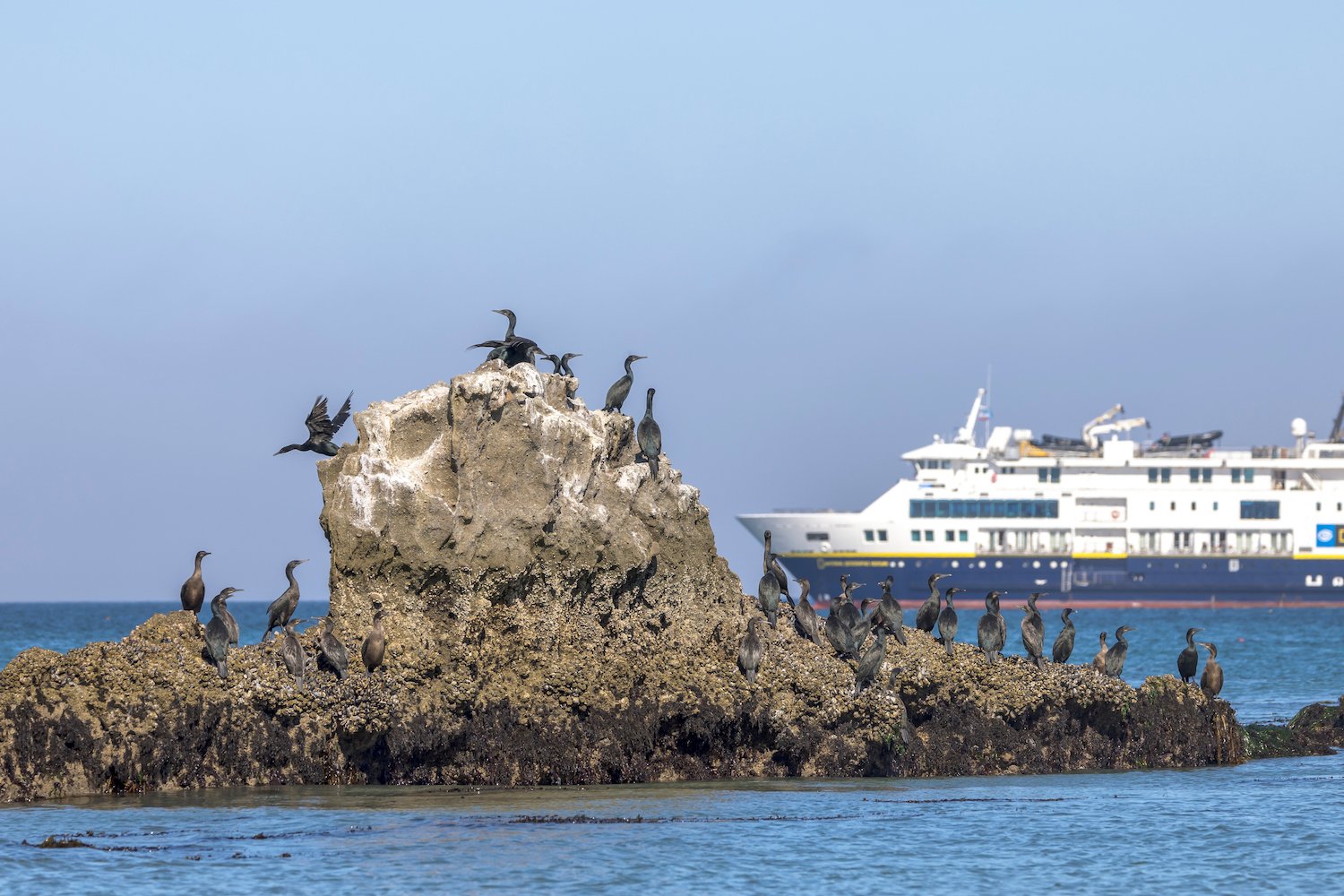
A flock of cormorants peers at the National Geograpic Quest cruise ship.
The ship felt, at times, a bit like a summer camp. Having worked at camps throughout high school and college, I laughed as I saw the staff managing excited septuagenarian guests with the same tricks that I had so often used to corral rowdy teenagers. Instead of putting on silly skits to keep us occupied until the dining room doors opened, the onboard photographer offered tips on taking wildlife photos with our phones.
I put that advice into use on Santa Rosa Island while looking for the endemic, eponymous island fox. The same winds that made the boat journey so tumultuous shaped the landscape of the island: Wizened eucalyptus trees bent until they grew almost parallel to the ground; the tall grass lay nearly flattened.

One of Santa Rosa Island’s cute, eponymous foxes.
Santa Rosa is the most habitable of the park islands, and it was, in fact, tenanted well into the 1980s by a cattle ranch. It was through the slats of an old ranch fence that I first spotted the pointy ears of the island fox, the only carnivore unique to California. About the size of a large housecat, it has mostly gray-brown fur with highlights of rust brown.
When DDT decimated the bald eagle population in the area, the golden eagles, which preyed on the foxes, moved in. The foxes did not know to be scared of these new eagles, and by 2000, only 15 Santa Rosa Island foxes remained. Thankfully, restoration efforts have worked, and within 20 years, the population was up to more than 2,600.
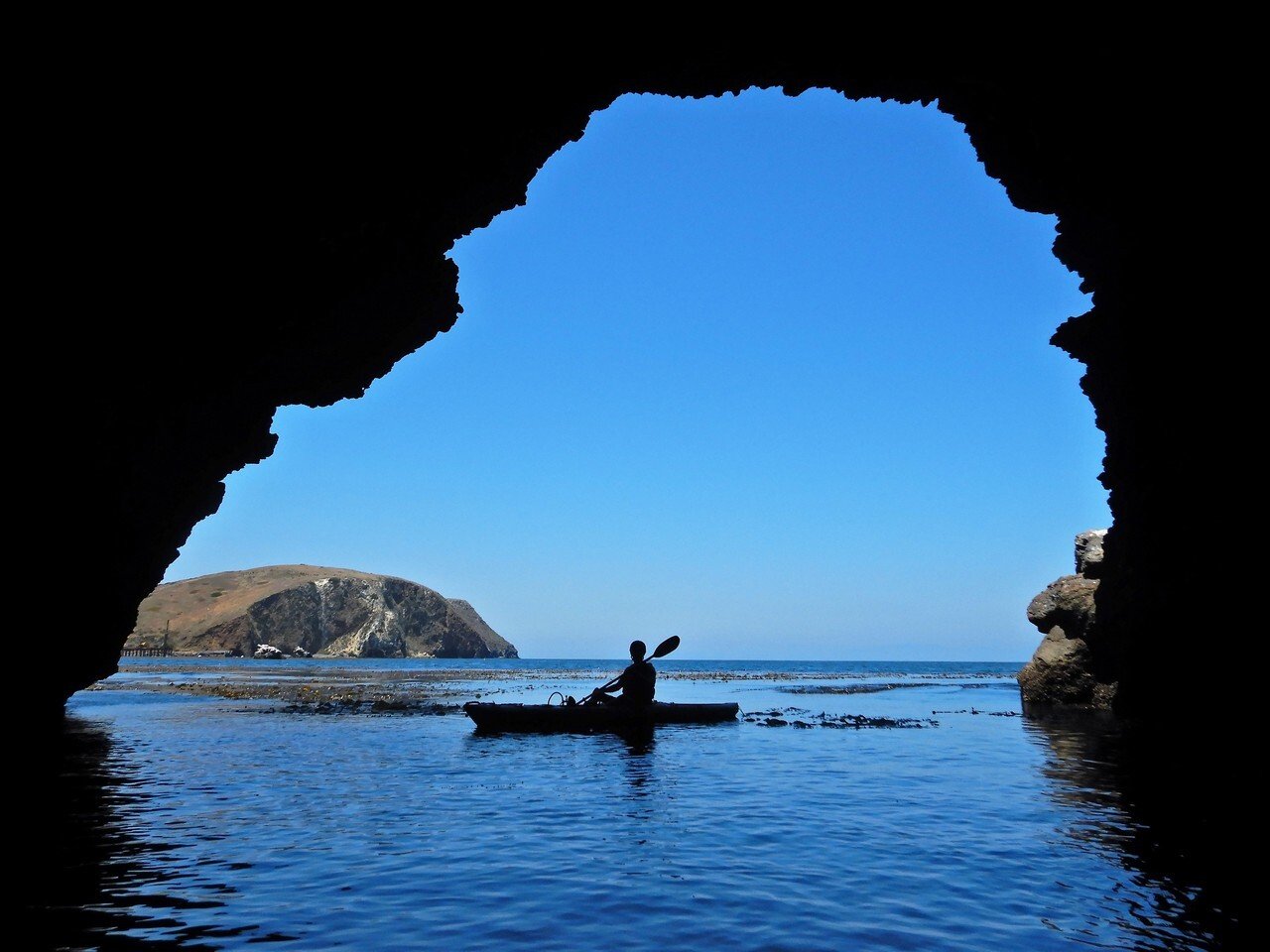
A kayaker pauses in the mouth of a sea cave off Santa Cruz Island.
The islands never connected to the mainland, so plants and animals on the islands evolved into species distinct from those elsewhere. The current theory is that the foxes came over with the Chumash people, who reached the islands by rowing across the ferocious waters in plank canoes.
PARTNER CONTENT
The Channel Islands were continuously inhabited by the Tongva and Chumash people for more than 10,000 years, and the Arlington Springs Man, found on Santa Rosa, is among the earliest human remains in North America. The cruise’s evening talk one night was about Juana Maria, the last Native resident of San Nicolas Island, who survived alone on the rugged island for nearly 20 years, despite disease-toting Europeans depleting food sources and the same gale-force winds we experienced.
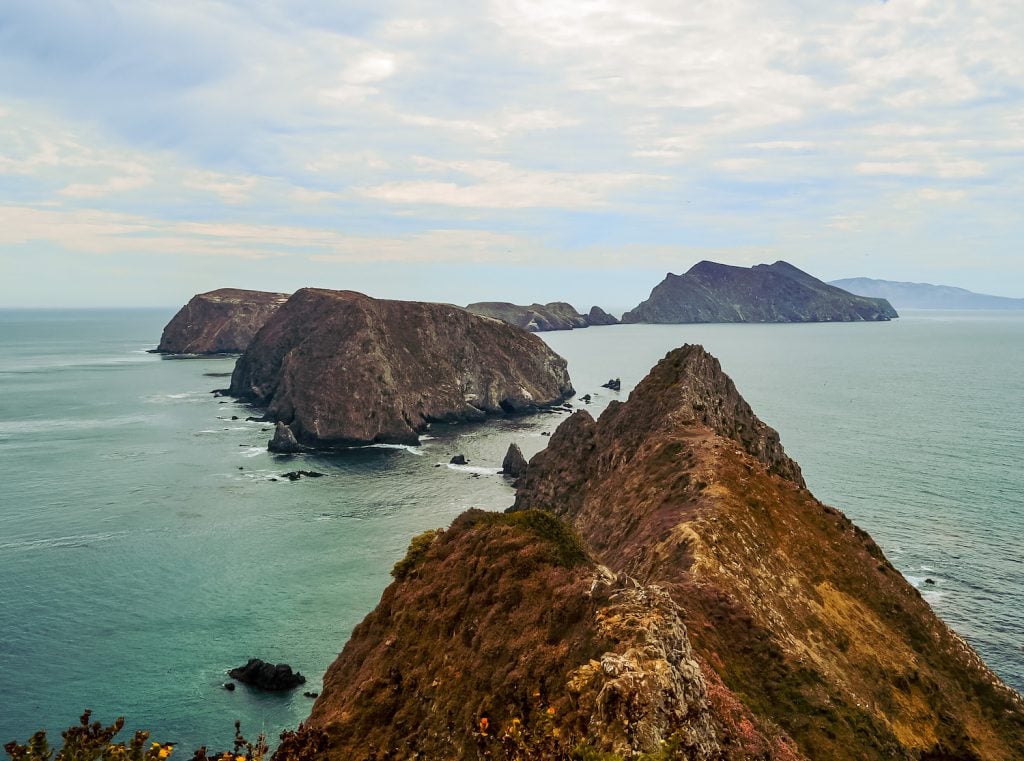
Anacapa Island’s Inspiration Point offers spectacular views of the craggy landscape.
The islands are not untouched or undamaged by humans, but they demonstrate the power of nature to persevere and bring joy. The still-churning seas prevented us from landing on the rocky rise of Anacapa Island, so we explored by Zodiac boat, floating past harbor seals playing and watching crowds of California sea lions as they swam with a fin above the surface of the water. They are thermoregulating, the naturalist explained. But, as the sun burnt a hole through the low misty clouds, an arc of colors reached down through the sky, and I refuse to believe those sea lions weren’t doing a little dance, their jaunty fins in the air to celebrate.















